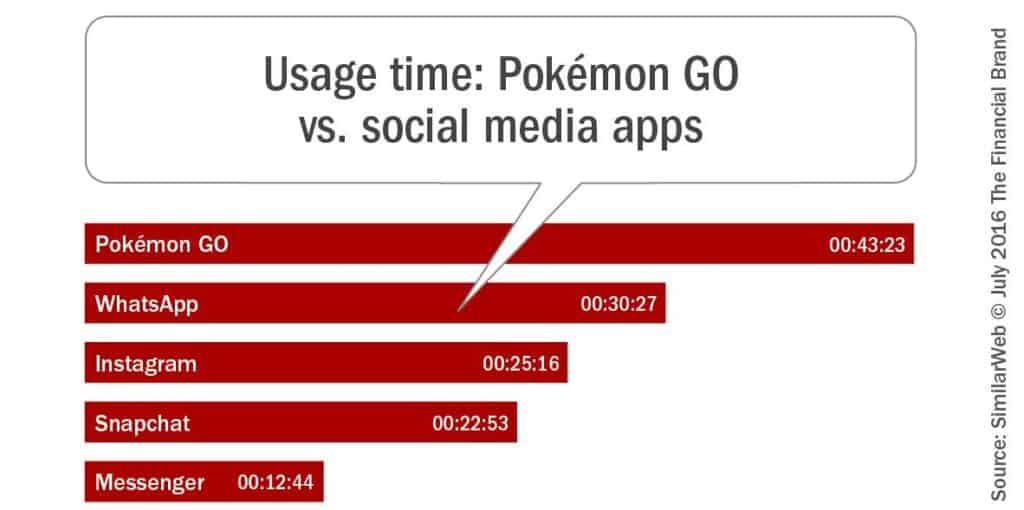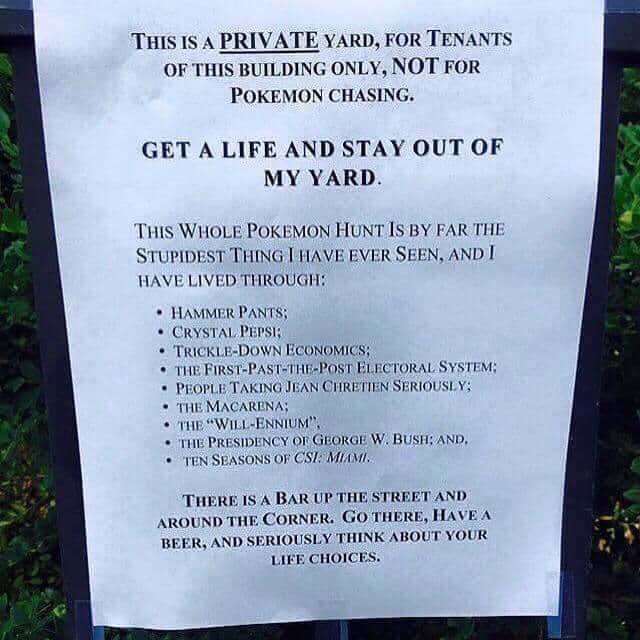If you want to understand the future impact of augmented reality, there’s no better place to start than Niantic’s wildly popular Pokémon Go AR game. This is not to say we have enough Stardust to wrap our collective heads around the issues, but the wild ride of the past four weeks sheds some light on our augmented reality future.
According to Engadget, the massively popular AR game has racked up over a 100 million downloads since its release on July 6. And SensorTower estimates the total revenue at $160 million:

If you think this is a fad that will quickly die out, think again. The current release only includes 150 Pokémon characters with hundreds more waiting in the wings. And the game has yet to be released in major mobile markets such as China and Brazil.
A Game Changer for Augmented Reality

Before the release of Pokémon Go, knowledge of AR was fairly sketchy outside of the tech community. Augmented reality has been around for a while but it has largely consisted of apps that add visuals or information to enhance our experience of the world. And advertisers and businesses have played around with it, perhaps most notably in the Ikea catalog project. But for many people, Pokémon Go is their first experience of AR with digital entities geo-located in the real world. Crowds track down Pokemons, share information, and gather in the streets and parks. The AR game is quickly bringing augmented reality to mass adoption.
This combination of gaming and AR offers a lot more than meets the eye. And it reveals how an augmented reality game can upend elements of our real world. So not quite 30 days in, here’s a few observations.
AR is Deeply Engaging
The early tech community (a month ago) got it wrong. AR would never succeed if it was just overlays of information. It needs to be about engagement. Pokémon Go is now surpassing the time spent on other social media social media platforms. Check the time on site stats from Focus Media Marketing:

The augmented reality in the game is basic, but it sucks you in. As Vox notes,
. . . the game does a lot to make you explore your real-world environment at different times. For example, if you go out to a park, you’ll probably see more grass- or bug-type Pokémon. If you go near a lake or ocean, you’ll be able to pick up more water types. And if you go out at night, you’ll see more nocturnal fairy and ghost types.
Take your phone’s GPS location, add in the time of day, link this to the type of environment you’re in, and your world comes alive as a gamified space.We’re in Boston this week near the Christian Science Center reflecting pool. Late at night, the area fills with Pokémon Go players congregating around the plaza, searching and catching the nocturnal AR beings.
AR games will reshape human behavior. The game is just an early glimpse of where augmented reality is headed.
AR Creates Anxiety
With the crowds gathering in public areas and people chasing Pokemons through private property, there’s been a raft of horror stories about incidents related to the game. The journalism site Poynter summarized some of the classic ones:
As children, teens, and, let’s face it, adults, bumble around with their eyes glued to their iPhones, some mayhem has ensued: Four teens used the game to rob multiple unsuspecting victims, the game unwittingly led a woman to discover a man’s body and one man’s home was designated a “Pokémon Gym,” leading to a slew of unexpected visitors looking to train their virtual creatures.
It turns out that most of the stories are false, coming from a single site, CartelPress.com, that passes itself off as a legit news source. It’s click-bait that gets picked up by the popular press:
But here’s something that definitely hasn’t happened: Timmy Richards, a 15-year-old Florida teen, definitely didn’t stab his 13-year-old brother to death over deleted Pokémon. A man hasn’t sued the game company Nintendo for $500 million after being hit by a car while playing Pokémon Go. And ISIS definitely hasn’t claimed responsibility for login problems on the game.
So the incidents with Pokémon Go are not nearly as bad as what the press would have you believe. New technologies always seem to increase social anxiety, but up to now, our tech has largely been confined to our screens. Once it merges with the real world everything changes. AR may locate us in the real world, but it dislocates us from our traditional comfort zones.
AR Raises Questions Over Virtual Space
In Pokémon Go, places in Google Maps become Pokestops or gyms in the game. And a number of them, both public and private, have drawn large crowds. Some locations – the death camps at Auschwitz come to mind – are hardly suitable as game settings. But AR doesn’t abide by real world rules. Some businesses see it as disruptive, others as a way to attract customers. They are not in the game but want to be a stop for Pokemon players. Colleges and universities seem to be all over the place, from outright bans to using it as a recruitment tool.
Whether or not you legally own the virtual space connected to your property will have to be worked out by the courts. We’ve been down this road before with the question of air travel. In 1946, United States v. Causby 328 U.S. 256 worked its way up to the Supreme Court. And the chicken farmer who had argued that he held the right to the air above his property all the way up to the heavens under common law, lost the case. For the Supreme Court, the “doctrine had no place in the modern world.”

But with augment reality, we’re not talking about fly-over space. What happens when game company’s algorithm designates your home as a Pokestop in a game? Or the lobby of an office building as a virtual gym? Or fills a cemetery or public park with virtual beings and locations? They’re not “there” in the traditional concept of space, but they are there (just ask the crowd standing outside someone’s house).
The question of virtual beings on private property is a whole new legal realm and the court cases are coming. When AR moves from text overlays to digital entities inhabiting the real word, we will have major issues to resolve between the real and the virtual.
To be Continued . . .
You may be getting sick of all the media coverage of the game, but look beyond the surface. This is the first massive use of augmented reality in society. And surely, it’s not the last. The implications for work, education, entertainment are profound. We’ll be following it closely for as Vox noted,
Pokemon Go isn’t a fad. It’s a beginning.
Emory Craig is a writer, speaker, and consultant specializing in virtual reality (VR) and generative AI. With a rich background in art, new media, and higher education, he is a sought-after speaker at international conferences. Emory shares unique insights on innovation and collaborates with universities, nonprofits, businesses, and international organizations to develop transformative initiatives in XR, GenAI, and digital ethics. Passionate about harnessing the potential of cutting-edge technologies, he explores the ethical ramifications of blending the real with the virtual, sparking meaningful conversations about the future of human experience in an increasingly interconnected world.

